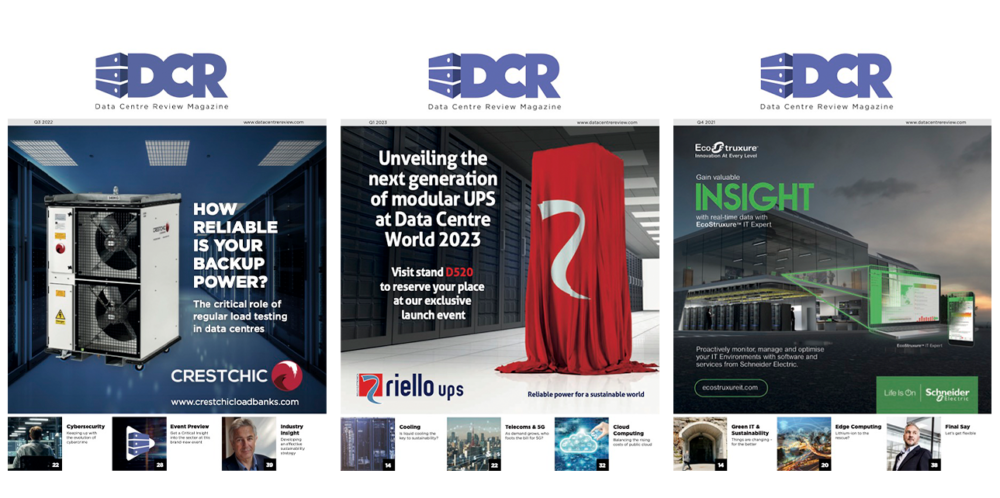AI is undeniably a transformative force, promising to reshape industries from healthcare to finance. However, amid the hype it’s worth asking if AI is following the same trajectory of the dotcom bubble in the 1990s – a period marked by inflated expectations and speculative investments that outpaced actual utility. Stewart Laing, CEO at Asanti Data Centre, asks what lessons can we learn from 30 years ago, and what does the data centre industry need to do to thrive during this change?
AI has become a driving force of innovation, with applications like generative AI and real-time language translation leading the charge. However, from what I have seen, much of the investment in AI-focused data centres appears speculative, driven more by hype than demand. This is reminiscent of the dotcom era when record amounts of venture capital poured into technology start-ups that never reached the promise of profitability.
The key issue is differentiating between AI’s two distinct phases; training and inference. Training AI models is compute-intensive, but it’s also short-term. Once trained, AI’s inference phase requires far less infrastructure. Failing to recognise this distinction risks overbuilding infrastructure, and significant resource wastage – especially in power and connectivity, which are already critical challenges for the data centre sector.
Adding fuel to the fire is the UK Government’s AI Action Plan. While well-intentioned, it amplifies the hype without addressing critical nuances.
What does the Government actually mean by AI?
One significant concern is the government’s vague definition of AI and its infrastructure needs. As previously mentioned – AI operates in two phases: a modelling phase requiring high-compute, short-term resources, and an inference (deployment) phase with significantly reduced demands. The Government’s current proposal for one or two massive AI data centres overlooks this distinction, leading to a centralised strategy that is disconnected from real-world needs.
Instead of funnelling resources into monolithic facilities, the Government should consider a distributed model using regional and edge data centres. This approach brings AI infrastructure closer to end-users, supporting critical services like hospitals and schools while avoiding the inefficiencies of centralisation. Crucially, it could also stimulate local economies by working with existing data centres across the country, ensuring broader benefits rather than concentrating opportunities in a few large-scale sites.
By focusing on hype over practical needs, we risk repeating the mistakes of the past, building for a future that may not materialise as expected.
AI is nothing new
AI, contrary to all the noise, is not a new technology. Many of us in the tech industry have witnessed its evolution for decades, with significant advancements since 2012. AI applications like Alexa, facial recognition, and predictive analytics have been embedded in everyday life for years. What is new is the scale of deployment, driven by a surge in generative AI and large language models.
Speculative investment in AI infrastructure may not align with real-world requirements, leading to wasted resources and unfulfilled expectations. This is particularly critical for the data centre sector, where ambitious AI projects must grapple with two foundational infrastructure challenges: power availability and network connectivity.
Infrastructure challenges that need to be solved
The issue of power
Data centres currently consume around 2% of global electricity, which is small in comparison to other sectors, but that number is expected to grow with the rise of AI. In the UK, the high cost of energy makes data centres less competitive internationally.
However, tapping into this green energy is fraught with inefficiencies. Unlike other countries with interconnected systems for power generation and distribution, the UK data centre industry relies on the National Grid. This dependency drives up costs and limits access to more efficient private wire options. Without more direct, scalable power solutions, the cost of scaling AI applications will remain unsustainable.
The absence of a cohesive national energy strategy compounds the problem. While Scotland produces more green energy than it can use, power-scarce regions in the South will struggle to meet growing demand. Renewable energy producers are currently being paid to curtail production, wasting billions of taxpayer’s money. Addressing these inefficiencies is crucial – not just for AI’s future but for the growth of the data centre industry and the UK economy as a whole.
Rolling out more fibre
Power is only part of the equation. Robust fibre optic connectivity is equally critical for the data centre industry.
Despite advances, the UK still lags in rolling out full-fibre connectivity. New data centre deployments are limited to areas where both power and fibre are available, but such locations are increasingly scarce due to the lack of coordinated infrastructure development.
When combined with the NIMBYism surrounding data centre planning, the provision of power and fibre will continue to challenge the advancement of AI and data-driven industries in the UK.
A smarter approach to AI infrastructure
Rather than competing with the UK’s existing data centre industry, the Government should partner with it to develop a sustainable, distributed model. By focusing on the infrastructure to support smaller, regional facilities, the UK can support existing businesses across the UK, not just those in the ‘AI Growth Zones’.
There’s no doubt that the AI revolution is real, but so too are the risks of overhype and overinvestment. The industry and Government must tread carefully, learning from the lessons of the 1990s to ensure that AI infrastructure investments are grounded in reality, not speculation.
Only by addressing foundational issues of power, connectivity, and realistic demand, can we build an AI-driven future that truly delivers.



